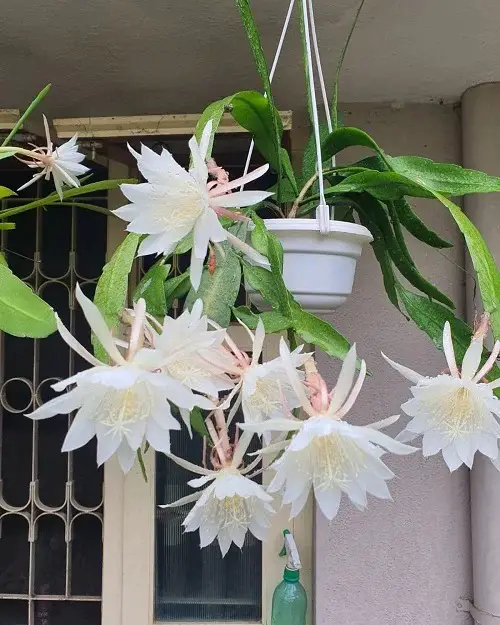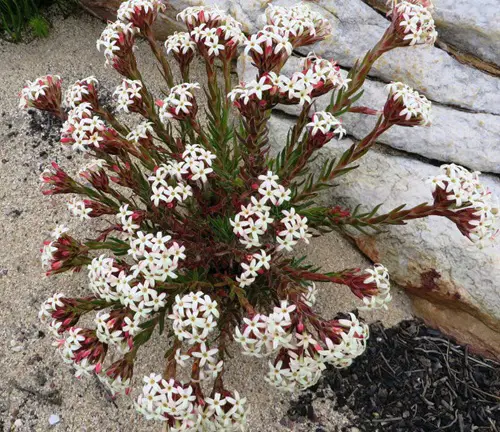We love succulents for their stunning looks, but did you know they often emit sweet scents, too? Here are the Most Fragrant Succulents!
Resilient, easy to grow, and bizarrely beautiful to look at, succulents are indeed a collector’s delight. But what makes them more delightful is that some exude surprisingly pleasant scents via their rare blooms or from their foliage itself. Check out our list of the most fragrant succulents!
Most Fragrant Succulents
1. String of Pearls
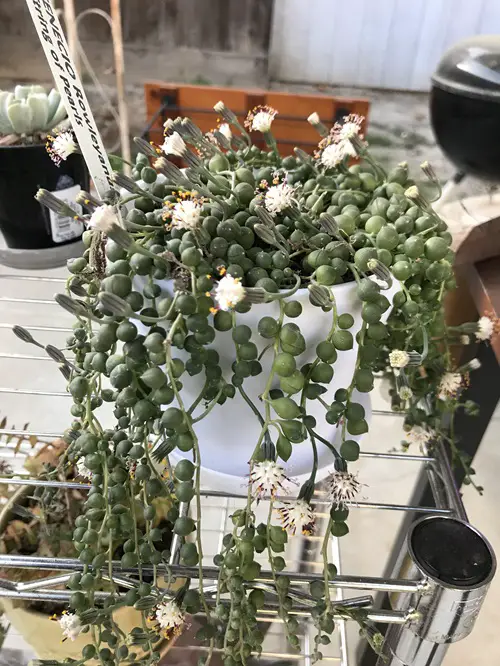
Botanical Name: Senecio rowleyanus
Aptly named the string of pearls, this succulent has long trailing stems with tiny bead-like leaves. If kept in a warm and dry location in winter, it produces white, daisy-like blooms with a cinnamon-like scent in spring and summer.
With blooms lasting a month, this cascading succulent loves partial shade and well-draining, acidic to neutral soil.
2. Vicks Plant
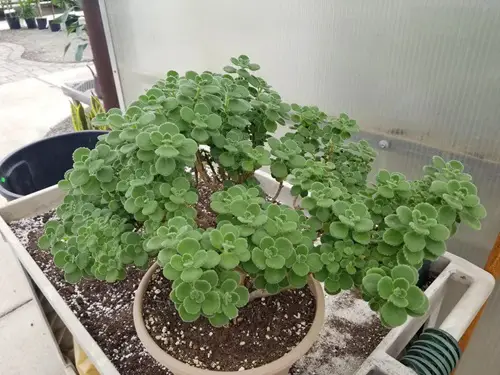
Botanical Name: Plectranthus hadiensis var. tomentosus
Comprising large amounts of essential oils, the leaves of this semi-succulent herb smell minty, sharp, and cool like Vicks Vaporub! Its leaves are green with a soft, fuzzy texture, and its blooms are blue and feathery.
This plant does well under bright sunlight and well-draining soil, but it can’t be grown indoors.
3. Snake Plant
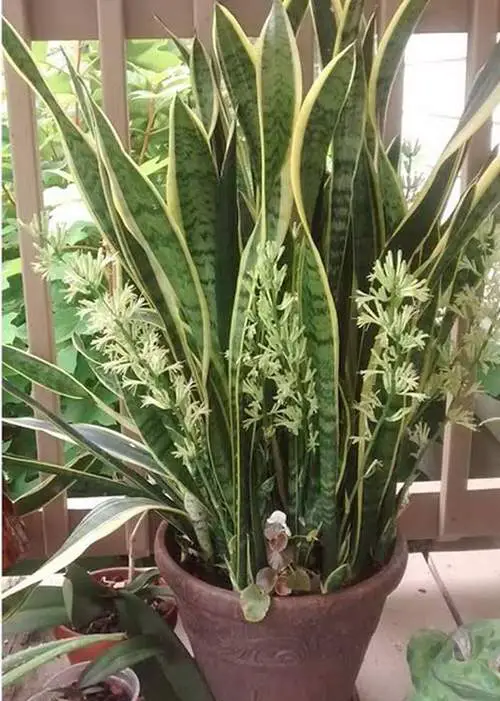
Botanical Name: Sansevieria trifasciata
Next on our list is the famous Snake Plant, a succulent adored for its peculiar leaves and air-purifying properties, which hides a fragrant trick up its sleeve! This succulent’s tiny, cream-colored, sticky flowers have a powerful mix of spicy and jasmine-like fragrances.
While they rarely bloom mostly outdoors and semi-outdoors conditions, here are a few tricks to nudge them into blooming.
4. Hoya

Botanical Name: Hoya
Many hoya varieties from the genus, including the famous “Heart Leaf Hoya,” are known for their fragrance. This one, Hoya kerrii, is coveted for its heart-shaped, succulent green leaves, but there’s more to it. The prized perfume of its flowers will surely have all your attention.
This epiphytic succulent produces clusters of waxy, pinkish-white blossoms once or twice a year that emit scents of chocolate, citrus, honey, and vanilla, which get stronger at night.
To get it to bloom, keep your hoya hearts rootbound and give it ample dappled sunlight and nighttime darkness. It does well in a well-draining neutral medium.
5. Queen of the Night
Botanical Name: Epiphyllum oxypetalum
Queen of the Night produces stunning white nocturnal blooms that emit sweet scents of vanilla and gardenias. With long, wavy leaves, its blooms mostly last just one night and, if pollinated, produce a reddish-purple oblong edible fruit. You’ll have to wait a whole year to catch its blooms again!
This epiphytic cactus thrives in both full and partial light and all types of soil. However, given its native habitat of rainforests, it needs more water than regular cacti; still, when growing indoors, you must wait for the soil to dry out, and the best part is you can also grow it in hanging baskets.
6. Fragrant Crassula
Botanical Name: Crassula fascicularis
The name reveals it all! Fragrant Crassula produces sweet-scented bouquets of red and yellow-tinged white blooms with curled back petals in spring and sometimes in summer. With lance-shaped, clustered leaves that point towards the sky, its blooms are most fragrant at dusk to lure in moths, its nighttime pollinators.
This succulent shrublet can survive in the wild on its own under bright, full sun and slightly acidic to neutral soil, making it perfect for the busy gardener!
7. Easter Lily Cactus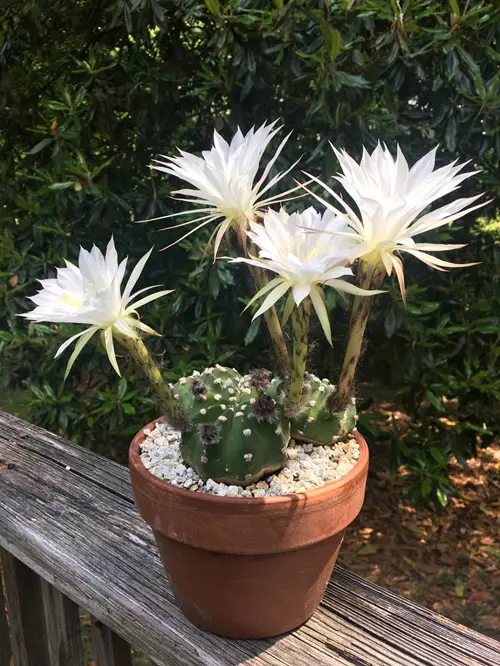
Botanical Name: Echinopsis oxygona
Native to South America, this succulent’s blooms overshadow the rest of it. Plant parents eagerly await its floral-scented pinkish-white nocturnal blooms in spring and summer. But even the plant itself is a sight to behold–rounded, ribbed, and with patterned spines, making it quite the spectacle even without blooms.
Plant this cactus in a pot with a well-draining, neutral cactus soil mix. It thrives in full sun with some afternoon shade!
8. Cuban oregano
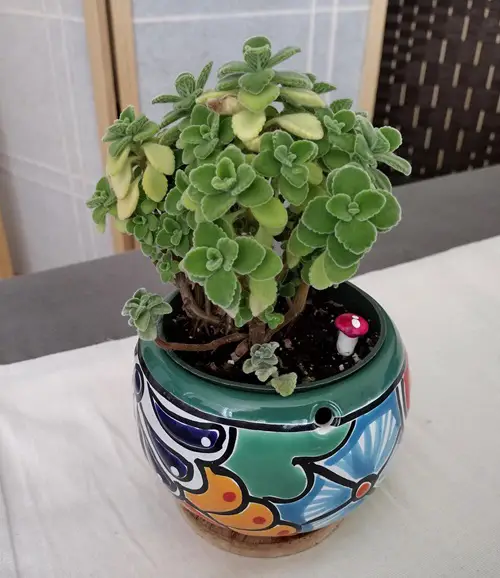
Botanical Name: Plectranthus amboinicus
This succulent herb is named after the oregano scent of its crushed leaves. Also known as Mexican mint and Indian borage, its fuzzy leaves contain essential oils that give it this fragrance; although it isn’t a true oregano but it has many culinary uses. In its early days, this edible herb features succulent stems that turn woody as it matures.
Cuban oregano prefers direct morning sun and some afternoon shade to prevent its leaves from burning. Remember to pick a spot that is hot and dry and don’t water it frequently.
9. Euphorbia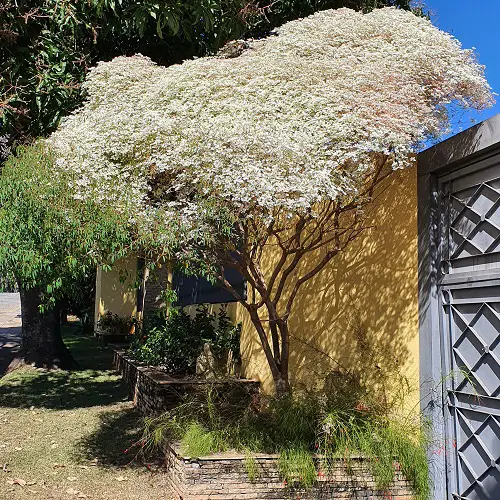
Botanical Name: Euphorbia sp.
There are all kinds of euphorbias, some disguised as succulents or even cacti, and many with scented flowers. Euphorbia leucocephala, also known as the “White Christmas Bush,” produces snow-white blooms with a sweet jasmine scent. Native to Mexico and Central America, it thrives in full sun, sparse watering, and a balanced succulent potting mix.
And then there are euphorbia varieties like “Honey Spurge,” a semi-evergreen shrub that produces honey-scented brownish blooms! Check out this article that lists the most popular euphorbias for your home, and remember that all parts of euphorbias are toxic.
10. Living Stones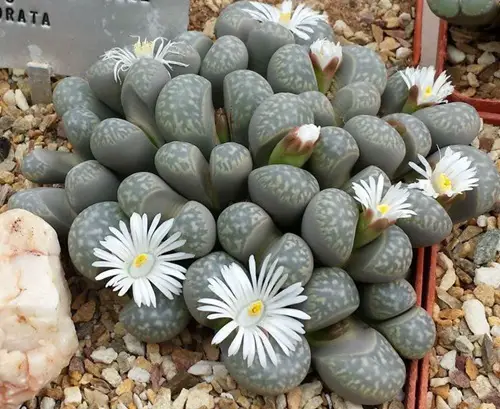
Botanical Name: Lithops
Looking like little pebbles with fissures on the surface, this South African native produces daisy-like pastel yellow, orange, and lilac blooms that emit a sweet, honey-like fragrance, uplifting the entire aura of a space. Emerging during late fall and early winter, these flowers open up during bright afternoons and close by dusk.
Possessing no stems, it’s easy to mistake these for round stones strewn on the ground. Lithops thrive in sunlight, well-draining soil, and moderate hydration.
11. Fishbone Cactus
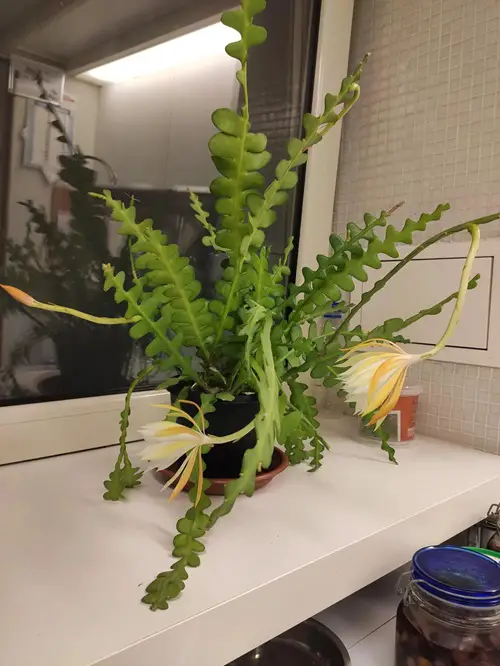
Botanical Name: Epiphyllum anguliger
Finally, we have a peculiar one to seal our list of fragrant succulents! Fishbone cactus is a “bony” succulent with a trailing habit that produces large, trumpet-shaped bronze and peachy white blooms that smell like lemons in fall.
Native to the rainforests of Mexico, it thrives in mildly humid, warm climates and prefers dappled sunlight.


